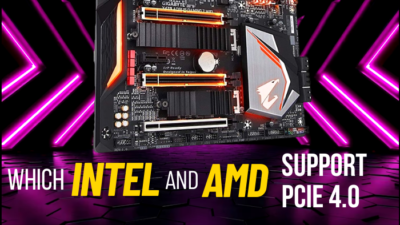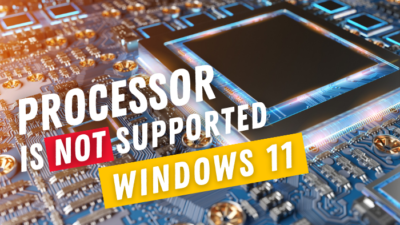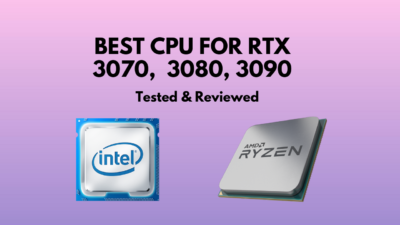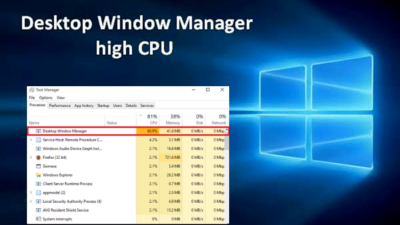Glucose is the primary source of energy for the human brain. And similarly, electrical power serves as the power source for the brain of a computer—the CPU.
The Central Processing Unit fails to operate without receiving adequate power. But, many factors can affect the PC booting and make you unsure about power management.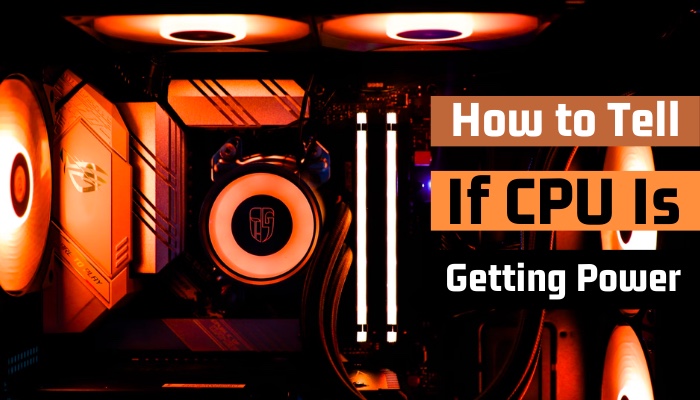
But don’t worry. Cause in this article, I’ll tell you the sign of a CPU getting enough power and help you identify it.
So, let’s begin.
How Do I Tell if My CPU is Getting Power
If the computer is booting correctly, it means the CPU is getting the required power and operating properly. Also, the increasing CPU temperature compared to the room state and the motherboard LEDs demonstrates the processor is receiving enough power.
A CPU doesn’t receive power through the cable. Instead, it gets the necessary power directly from the motherboard.
When the motherboard works fine, it’s easy to tell if the processor is getting power from the mobo. The following sign will give you an understanding of the powering state of a processor.
Here are the signs of a CPU getting the necessary power:
PC is Booting
A computer doesn’t turn on without a processor. If your PC is booting normally, it’s a clear sign that the CPU is running alright and getting the necessary power to turn on.
When the PC is booted, you’ve nothing to worry about the adequate CPU power.
Processor is Heating Up
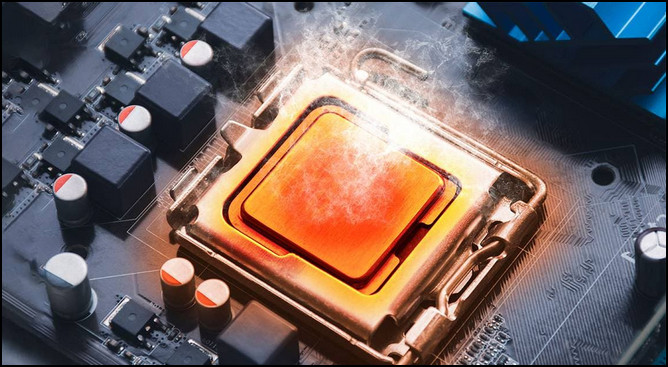 Every CPU has a temperature limit at each state and condition. When the processor stays off, the temperature should be around or below the ideal room temperature of 72 °F (ca. 22 °C).
Every CPU has a temperature limit at each state and condition. When the processor stays off, the temperature should be around or below the ideal room temperature of 72 °F (ca. 22 °C).
If the CPU receives power, it will start getting heated, and the temperature will rise. So, if you feel the temperature is above the room state, your CPU is getting enough power.
Blinking Motherboard LEDs
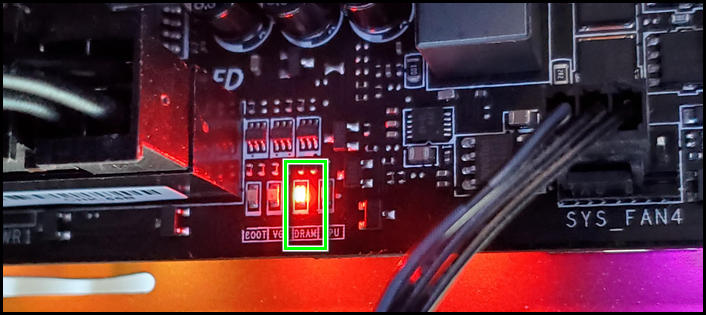 Before the booting state, the BIOS performs a Power-On-Self-Test (POST) to check all the components are running correctly. During the testing process, the motherboard shows a signal through the LEDs to tell about the component state.
Before the booting state, the BIOS performs a Power-On-Self-Test (POST) to check all the components are running correctly. During the testing process, the motherboard shows a signal through the LEDs to tell about the component state.
If you see blinking LEDs on the motherboard, the mainboard has received power from the PSU and started functioning. A red LED signal indicates the CPU is bad and causing a no POST issue.
But if you don’t see blinking red LEDs, your CPU is fine and getting power from the motherboard.
However, if the CPU doesn’t receive any power, you can check by the following passage and narrow down the issue.
What Should I Do if the CPU Doesn’t Get Power?
When the processor doesn’t get adequate power, you must set up the motherboard without casing to remove the short-out problem and replace the motherboard to check the CPU condition. Also, you must ensure a proper power cable connection and PSU condition to power up the CPU.
It’s very unusual for a CPU to die. If the CPU doesn’t get the power, there can be additional reasons which hinder the power flow to the CPU.
The following passage will describe the essential task you need to do when the CPU fails to get power.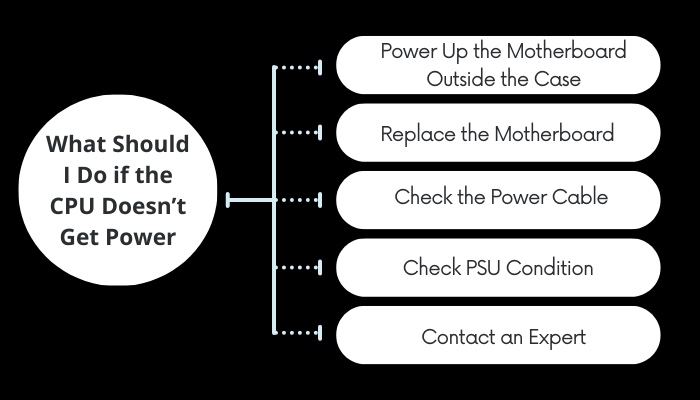
Here are the tasks to ensure proper CPU power management:
1. Power Up the Motherboard Outside the Case
Sometimes the case mounting creates a short out to the motherboard circuit. As a result, the motherboard fails to function correctly and can’t provide power to the CPU.
So, when the CPU doesn’t power up, you should strip down the motherboard and assemble it without the casing to check the connection.
If you had a short-out situation, building the PC without casing will power up your processor.
2. Replace the Motherboard
The CPU only receives power from the motherboard. But, if the mainboard has any issue, it will fail to provide power to the processor, and won’t boot up the computer.
If you are unable to pinpoint the problem, exchange your CPU or motherboard with others and check if they are working well.
After replacing the motherboard, if the PC turns on without any issue, it indicates that your CPU is fine and your previous motherboard had a problem.
3. Check the Power Cable
The PSU delivers the power to the motherboard through the 20 or 24-pin motherboard connector. Ensure a proper connection and cable condition to guarantee an uninterrupted power flow.
If you find any fault, you must check the required PSU cables and buy a new one.
4. Check PSU Condition
PSU is the powerhouse of a computer. It supplies all the required power to every PC component to ensure a smooth session.
But, if the PSU is in bad condition or fails to generate appropriate voltage, the motherboard won’t receive adequate power. Thus, the CPU will fail to get its necessary power.
You must check the power supply unit using a multimeter or Power Supply Tester to verify the health. If you find any issues, you must change the PSU to run your computer well.
5. Contact an Expert
It’s a complicated task to identify and pinpoint the issue regarding the CPU power. If you are unable to do it yourself, you must contact an expert or take your PC to the service center for the repair process.
However, if the motherboard or CPU is bad, you need to buy a new one to make your computer functional.
Frequently Asked Questions
How much power does a CPU need?
A standard CPU needs between 65 and 85 watts to power up. But, for the powerful processor, it can go from 125W to beyond 250W.
Will a PC turn on with a dead CPU?
No, the computer won’t complete the POST process and boot to the operating system if the CPU is dead.
What does a red LED on a motherboard mean?
The red LED on a motherboard means there are problems with a computer parts or component.
Conclusions
Ensuring the proper power management of the CPU is vital for running your computer seamlessly. Also, it will help to verify the problems with the processor and take quick measurements.
If you find this article helpful, don’t forget to share them in the comment box below.
Goodbye.

